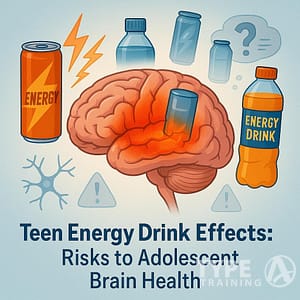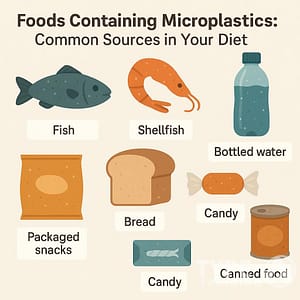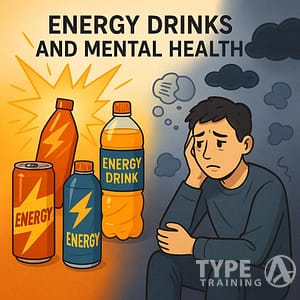When you head out for a jog or hit the gym, you probably don’t give much thought to the air you’re breathing. But honestly, the air quality can make a big difference in your workout.
Poor air quality can reduce your exercise performance, spike your heart rate, and even slow down how well your muscles recover after training. Research shows that when we exercise, we breathe in more air—and yeah, more pollutants—than when we’re just chilling.

The effects of pollution on your body during workouts are honestly a bit worrying. Heart rates go up when you breathe in pollutants like diesel particles before you even get moving.
Popular posts:
As you work out, your breathing rate climbs, so you end up inhaling more pollutants than you would just sitting around. Outdoor workouts on high pollution days? Not exactly ideal.
Still, air quality shouldn’t scare you away from staying active. The health perks of regular exercise usually outweigh the risks of pollution for most folks.
You can limit your exposure by working out indoors when the air’s bad or picking times when pollution levels are lower.
Key Takeaways
- Exercise makes you breathe harder, so you inhale more pollutants than when you’re at rest.
- Poor air quality can mess with your workout performance, heart rate, and how fast your muscles bounce back.
- You can dodge some pollution by working out indoors on smoggy days or picking times when the air’s cleaner for outdoor sessions.
Air Quality Impacts Fitness: Understanding How Pollution Affects Exercise Performance

Air quality really does affect your health when you exercise. Bad air quality means more harmful stuff in your lungs, which can make breathing harder and workouts tougher.
Types of Air Pollutants
Air pollutants show up in all sorts of forms, and each type comes with its own set of problems. Particulate matter (PM) includes super tiny particles that can sneak into your lungs and even your bloodstream.
PM2.5 is especially nasty—these are particles smaller than 2.5 micrometers, and they can dig deep into your lungs. PM10 particles are a bit bigger (under 10 micrometers), so they don’t travel quite as far inside your body, but they’re still not great.
Ozone forms near the ground when pollution meets sunlight. It can really irritate your airways, especially if you’re exercising.
Nitrogen dioxide mostly comes from cars and power plants. It can make your airways cranky and aggravate asthma.
Volatile organic compounds (VOCs) are gases that come from stuff like paint, cleaners, and car exhaust. They help form ground-level ozone, which, as you can guess, isn’t helpful for breathing.
How Air Quality Index Is Measured
The Air Quality Index (AQI) is a simple way to check out how polluted the air is on any given day. It measures big air pollutants like PM2.5, PM10, and ozone.
AQI numbers run from 0 to 500, and the higher the number, the worse the air. The scale uses colors to make things easy:
- Green (0-50): Good
- Yellow (51-100): Moderate
- Orange (101-150): Unhealthy for sensitive groups
- Red (151-200): Unhealthy
- Purple (201-300): Very unhealthy
- Maroon (301+): Hazardous
You can check AQI through weather apps, websites, or local air quality forecasts. Handy if you want to plan your outdoor workouts without guessing.
Environmental Pollutants and Their Sources
Most outdoor air pollution comes from things people do. Cars and trucks pump out nitrogen dioxide and particulate matter, so areas near busy roads usually have dirtier air.
Factories let out all kinds of stuff, including VOCs and particulates. These pollutants don’t just stick around the source—they can drift and mess with air quality far away.
Power plants that burn fossil fuels are big offenders, especially those running on coal or oil. They crank out particulate matter, nitrogen dioxide, and other junk.
Nature gets in on the act too. Wildfires can dump huge amounts of particulate matter into the air, and the smoke can travel for hundreds of miles, messing with exercise safety way beyond the fire zone.
Weather plays a part. Hot, sunny days usually mean more ozone, while rain can clear the air. Wind can either spread pollution or trap it, depending on the direction and speed.
How Air Quality Impacts Exercise Performance
Air pollution throws up some real hurdles for anyone exercising outside. When you combine heavier breathing with dirty air, it can mess with your performance right away and even affect your health over time.
Immediate Physiological Effects During Workouts
Exercising in polluted air triggers some pretty quick reactions in your body. Your lungs work overtime during workouts—sometimes you breathe 10-20 times more air than you do at rest, so you’re also sucking in way more pollutants.
This can spark inflammation in your airways within minutes. Some common immediate effects include:
- Shortness of breath
- Coughing or throat irritation
- Decreased lung function
- Chest tightness or pain
- Reduced endurance capacity
Even a little exposure to polluted air can knock your exercise performance down by 5-10%. Your body starts fighting off irritants instead of fueling your muscles, so you tire out faster and can’t go as hard.
Long-Term Health Risks for Active Individuals
Working out in polluted air over and over can lead to chronic health problems, despite all the good exercise does. Your body takes a beating from repeated exposure during workouts.
People who regularly exercise outdoors in polluted areas face higher odds of developing:
- Chronic respiratory conditions like asthma
- Decreased lung function over time
- Faster progression of existing respiratory diseases
- Higher risk of respiratory infections
If you already have asthma, COPD, or heart disease, pollution during exercise can make things worse, and it can happen faster than you might think.
Your immune system also gets stressed out by pollution, which might make it less effective at fighting off other stuff.
Pollution Exposure and Exercise Intensity
The harder you work out, the more pollution you take in—it’s a pretty direct link. When you push yourself, you breathe deeper and faster, so you get a bigger dose of whatever’s in the air.
At moderate effort, your breathing rate might double or quadruple. Go all out with high-intensity exercise, and it can jump six to ten times your normal rate. This means:
- More pollutants reach deep into your lungs
- More harmful particles get stuck in your respiratory system
- Your body cranks up inflammation to deal with the extra junk
Some studies say the benefits of exercise still outweigh the pollution risks for most healthy people, but that balance tips if the air is really bad. Timing matters—ozone peaks in the afternoon, especially in summer, so mornings or evenings are safer bets.
Cardiovascular and Respiratory Challenges
Air pollution puts extra stress on your heart and lungs when you’re working out. Exercise already makes your cardiovascular system work harder, and pollution just piles on.
Your heart has to pump more when pollution triggers inflammation. This can mess with blood flow and even bump up your
Some of the main cardiovascular and respiratory effects look like this:
- Higher heart rate even at lower effort
- Reduced oxygen in your blood
- Oversensitive airways
- Worse gas exchange in your lungs
- Greater risk of exercise-induced bronchoconstriction
If you have heart disease or type 2 diabetes, these effects can get serious. Even healthy people can speed up heart problems if they keep exercising in polluted air.
Your lungs’ defenses can’t keep up with the combo of heavy breathing and pollution, so more harmful stuff gets deep inside.
Outdoor Exercise in Polluted Environments
Exercising outside means you deal with whatever the air throws at you—sometimes it’s fresh, sometimes not so much. Knowing when, where, and how to work out outdoors can help you stay safer and still enjoy the perks of being outside.
Risks Associated With Outdoor Workouts
When you exercise in polluted air, your breathing rate can shoot up—sometimes 10 or even 20 times higher than when you’re just sitting around. That means you’re dragging a lot more pollutants into your lungs than you’d probably like.
This kind of exposure brings a mix of immediate and longer-term health effects. It’s honestly a bit unsettling how quickly you can feel it.
Short-term symptoms include:
- Irritated eyes, nose, and throat
- Coughing and wheezing
- Shortness of breath
- Decreased lung function
- Aggravated asthma symptoms
Long-term risks get more serious. We’re talking about:
- Decreased lung capacity
- Increased risk of respiratory infections
- Potential cardiovascular problems
- Worsened existing respiratory conditions
Regular exercise usually improves your health, but air pollution can throw a wrench in those benefits. It’s a weird push-pull situation.
Your personal sensitivity matters too. If you have asthma, COPD, or heart disease, you’ll probably notice symptoms even when pollution levels aren’t sky-high.
Choosing Safe Locations for Physical Activity
Where you work out outdoors really changes how much pollution you breathe in. Not every park or trail in a city has the same air quality—sometimes it feels like a gamble.
Best locations for cleaner air:
- Parks and green spaces (at least ¼ mile from major roads)
- Trails surrounded by trees
- Waterfront areas (lakes, rivers, beaches)
- Higher elevation areas away from city centers
Locations to avoid:
- Within 500 feet of highways or busy intersections
- Industrial areas
- Areas with visible smog or haze
- Construction zones
Air pollution tends to be higher within a quarter mile of major roads. Parks and green spaces really do help—trees and plants act like nature’s air filters, which is pretty cool when you think about it.
If you live in a dense city, you might want to hit the gym or do an indoor workout on days when the air outside looks or smells off. Some gyms actually show real-time air quality info now, which is handy.
Timing Workouts for Better Air Quality
When you work out can matter almost as much as where. Air quality changes a lot during the day, depending on traffic and the weather.
Optimal timing strategies:
- Exercise early morning (before 7 AM) when traffic pollution is lowest
- Avoid rush hour periods (typically 7-9 AM and 4-7 PM)
- Check daily air quality forecasts before planning workouts
Weather plays a role, too. Skip outdoor workouts during:
- Temperature inversions (when warm air traps pollution near the ground)
- Hot, sunny afternoons when ozone levels spike
- Still, windless days—pollutants just hang around
The Air Quality Index (AQI) is your friend here. AQI below 50? Go for it. Above 150? Maybe don’t risk it outside.
Indoor Air Quality and Fitness
The air you breathe during workouts—especially indoors—can really impact your performance and how you feel afterward. Bad indoor air lowers oxygen, stirs up inflammation, and can mess with your lung capacity while you exercise.
Common Indoor Pollutants Affecting Exercise
When you’re working out inside, you take deeper, faster breaths, which means you suck in more of whatever’s floating around. Some common indoor pollutants:
- Volatile Organic Compounds (VOCs) from cleaning sprays, air fresheners, and building stuff
- Particulate matter like dust, smoke, and outdoor pollution that sneaks in
- Carbon dioxide from people breathing, especially in packed gyms
- Mold and mildew if it’s damp—think pools or locker rooms
These nasties can mess with your lungs and endurance. During a tough workout, you might be inhaling five to ten times more air than when you’re just chilling.
Researchers have found that bad indoor air can trigger coughing, throat irritation, and shortness of breath, which is definitely not what you want mid-squat or sprint.
Improving Indoor Air for Safe Workouts
You can do a few things to make your workout space healthier:
- Time your workouts wisely—go for early morning or evening when pollution’s lower
- Use air quality monitors to keep tabs on your home gym’s air
- Wear a particle filtration mask if the air quality is iffy
Poor air quality affects post-workout recovery by cutting down oxygen to your muscles and cranking up inflammation. If you can, hit a park or somewhere far from traffic instead.
Try not to go wild with chemical cleaners before you work out. Natural or low-VOC cleaners are usually a safer bet for your gear and space.
Ventilation and Air Filtration Strategies
Good ventilation is a must for decent indoor air. Open windows if the weather and outdoor air aren’t terrible—fresh air helps more than you’d think.
Indoor exercise spaces with poor air quality can harm your lungs. Make sure your HVAC system has solid filters (MERP 13 or higher) and keep them clean.
Air purifiers can make a noticeable difference:
| Purifier Type | Best For | Effectiveness |
|---|---|---|
| HEPA | Particulate matter | Very High |
| Activated Carbon | VOCs, odors | High |
| UV-C | Bacteria, viruses | Moderate |
Stick the purifier close to where you exercise. Swap out filters as often as the manufacturer suggests—it makes a difference.
Don’t forget humidity. Keeping it between 40-60% helps prevent mold and keeps your breathing comfortable.
Susceptible Populations and Health Conditions
Air pollution isn’t picky—it can hit anyone. But some people really get the short end of the stick, especially when they’re working out in less-than-clean air.
Asthma and Respiratory Sensitivities
If you have asthma, exercising in polluted air can be a real gamble. Fine particulate matter (PM2.5) digs deep into your lungs, causing inflammation and narrowing of airways.
Even short bursts of high pollution can:
- Trigger asthma attacks
- Make you reach for your inhaler more often
- Cause chest tightness and wheezing
- Drop your lung function, at least for a bit
If you’ve got chronic obstructive pulmonary disease (COPD), things get even trickier. Your lungs are already working harder, and exercise just multiplies how much air—and pollution—you’re pulling in.
Effects on Athletes and Active Individuals
Athletes have their own set of problems with polluted air. Since you’re breathing way more deeply and often, you end up inhaling more pollutants than someone just lounging around.
This can mean:
- Lower endurance
- Slower recovery
- Worse oxygen delivery
- Inflammation that kind of cancels out your training gains
Pro athletes in big cities sometimes see their VO2 max and other performance numbers dip on high-pollution days. It might be worth tweaking your training schedule based on air quality forecasts.
Impact on Chronic Diseases
Air pollution during exercise doesn’t just mess with your lungs. If you have diabetes, working out in dirty air can worsen insulin resistance and make blood sugar harder to control.
If you’re dealing with heart issues, exercising in polluted air bumps up your risk for:
- Irregular heartbeats
- Higher
blood pressure - Lower heart rate variability
- Potential cardiac events
Some newer research links pollution exposure to faster dementia progression, too. The combo of heavy breathing during exercise and neurotoxic air might speed up cognitive decline in sensitive folks.
Strategies to Minimize Pollution Exposure During Workouts
There are actually a bunch of ways you can cut down on your pollution exposure while exercising. Some are as simple as picking the right spot or time, while others mean gearing up a bit.
Wearing Masks for Outdoor Exercise
Masks can seriously help cut down how much pollution you breathe in during outdoor workouts. But not all masks are created equal—N95 or KN95 types filter at least 95% of airborne particles and give you the best shot at protection.
Sports-specific pollution masks exist, and they’re made for exercise. They often come with exhaust valves, which make it easier to breathe hard without feeling like you’re suffocating. That’s huge, because regular masks sometimes make you feel like you can’t get enough air.
Fit matters. Your mask has to seal up well—gaps mean less protection. For high-intensity stuff, you might want to try masks made for athletes that balance filtering with breathability.
Don’t forget to swap out your mask regularly, especially if you’re using it in really polluted conditions.
Using Air Purifiers and Filtration Masks
Indoor air quality matters. Home air purifiers with HEPA filters can remove up to 99.97% of airborne particles and make your space safer for workouts.
Put purifiers in your exercise area and run them before and during your session. It’s a simple step, but it helps.
If you’re working out at an indoor gym, try using a portable air purifier. Just set a small unit close to your workout spot—it’ll create a little bubble of cleaner air right where you need it.
Filtration masks with replaceable filters can add another layer of defense. Many use activated carbon filters, which block particles and filter out some gases and odors from pollution.
Some high-end filtration masks even connect to smartphone apps. These apps can track your breathing patterns and local air quality, which is honestly pretty cool.
You can use this tech to adjust your workout intensity based on both the environment and how your lungs are handling things.
Monitoring Air Quality Indices
Always check the Air Quality Index (AQI) before heading outside. Most weather apps or websites have it front and center.
If the AQI is below 50, you’re good to go. When it creeps above 100, sensitive folks should take extra care.
Skip outdoor exercise if AQI levels go over 150—it’s just not worth the risk. On those days, work out indoors or dial back your workout intensity.
There are apps out there that give you real-time pollution data for your exact location. Some even let you set alerts for when air quality takes a nosedive.
Try to time your workouts for when air is freshest. Early mornings or right after rain usually mean lower pollution.
Avoid exercising near busy roads or during rush hour—vehicle emissions really pile up then.
The Role of Research in Understanding Pollution and Fitness
Scientific studies keep uncovering new connections between air quality and exercise. Researchers dig into how pollution affects your body during workouts and look for ways to help you stay healthier.
Recent Findings on Exercise and Air Pollution
Turns out, air pollution can really mess with your workout experience. For example, heart rates go up during exercise if you’re exposed to diesel particles beforehand.
Your body works harder in polluted environments. Even moderate pollution can lead to slower running times in races, which feels a bit unfair, honestly.
On the flip side, exercise might offer some protection. Some studies suggest that staying active could help your body adapt to oxidative stress and inflammation from air pollution over time.
Knowledge Gaps and Future Studies
Even with all the recent progress, researchers still can’t say for sure what happens to our bodies after years of exercising in polluted air.
Most studies just look at the short-term stuff. The bigger picture, like what happens after months or years of exposure, remains pretty murky.
There’s a lot we don’t know about how different workouts interact with various pollutants.
Is a high-intensity run in smog worse than a slow walk? Some folks think so, but honestly, the data’s just not there yet.
Scientists are also digging into how getting air quality info changes the way people exercise.
Figuring out if and when you actually tweak your workout because of pollution could help shape smarter health advice.
Researchers want to know if things like age, fitness level, or existing health issues make you more (or less) vulnerable when you exercise in bad air.
Maybe someday we’ll get recommendations that actually fit each person, not just blanket advice for everyone.














